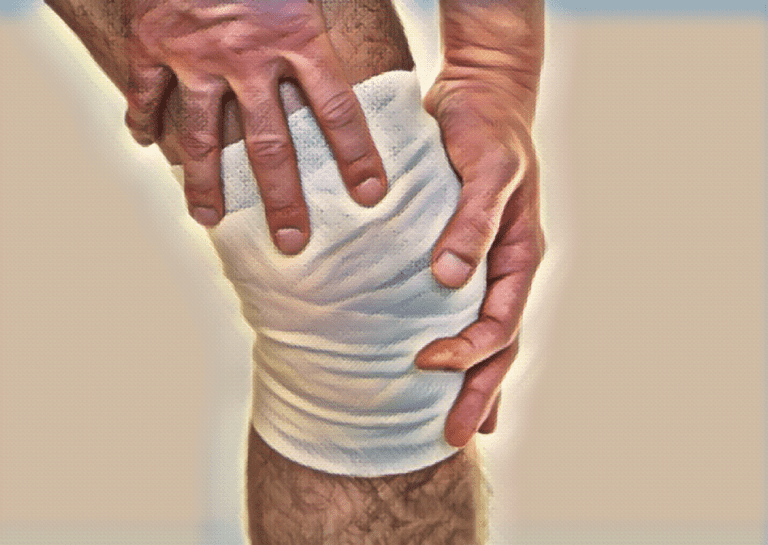Sprains and strains are common, generally minor injuries that affect the muscles, tendons, and ligaments. The terms ‘strain’ and ‘sprain’ are sometimes used interchangeably, but there are distinct differences between these types of injuries.
A sprain is when the connective tissues in our joints are damaged as a result of overextension, while a strain describes when a muscle or tendon becomes torn from excessive stretching or overuse. Both injuries can be sudden and painful, and can easily occur through accidents, excessive exercise, sports, or incorrect use of muscles and joints.
This article discusses sprains and strains injuries, their potential causes, and the types of treatment available for these common injuries.
Sprains vs strains
As mentioned above, there is often confusion between what is a strain and what is a sprain. Some may even use the terms interchangeably without realizing the difference between them. While it is true that sprains and strains have similar causes and symptoms, there are some important differences to note between both injuries. Neither involves damage to either the nerves or bones, and instead, involves the ligaments, tendons, and muscles.
Strains
Strains result from overuse or overextension of muscles or tendons — the tissues that connect bones and joints. You might hear a strain referred to as a ‘pulled muscle’ — a term that quite accurately describes how this type of injury occurs. Sometimes, though intensive exercise or a simple sporting accident, muscles and tendons can be pulled and stretched beyond their physiologic range, leading to painful tearing. The muscles and tendons of the lower back and hamstrings are particularly susceptible to strain.
Sprains
A sprain is when the supporting ligaments of a joint are over-stretched, causing mild pain and stiffness. The range of motion is often unaffected by simple strains. Common sprain injuries involve the ankles, shoulders, and wrists. Strain injuries can range from mild to severe depending on the extent of the damage and the number of ligaments involved. Clinicians will assign a grade of I, II, or III based on severity. Despite the tenderness and pain that usually accompany mild and moderate sprains, the patient should still be able to walk (if suffering an ankle sprain) and move the affected joint.
Diagnosis
Strains and sprains are diagnosed based on the mechanism of injury, the severity of symptoms, and the patient’s history of injuries in the same area.
The clinician will perform a physical examination to check for the following:
- Swelling
- Pain when area is pressed or gently bent back and forth/rotated
- Bruising or purple/blue discoloration
- Tenderness
- Tissue deficit
- Deformity
They may also use diagnostic imaging for more severe cases — if a patient cannot bear weight on a sprained ankle, for example. In such instances, a plain radiograph is used. Magnetic Resonance Imaging (MRI) may be used if the injury persists beyond 6 to 8 weeks.
Treatment
Mild strains and sprains often don’t require any treatment and can heal up by themselves if given sufficient rest. This means avoiding significant weight-bearing and using crutches if necessary. Treatment for more serious strain and sprain injuries can depend on the mechanism and the severity of the injury.
Initial management can be summed up by RICE (Rest, Ice, Compression, Elevation). Resting the area and limiting movement, cooling and compressing the area to reduce swelling, and elevating the area above heart level can all promote healing.
Non-steroidal anti-inflammatory drugs and diclofenac gel can be used to alleviate pain and inflammation. Once pain and swelling are under control, it is important to start rehabilitation exercises to maintain range of motion, especially for ankle injuries.
To summarize, strains and sprains are common, generally mild injuries that can heal by themselves. However, more severe injuries may require medical intervention, medication, and rehabilitation. Sprains and strains can easily result from accidents like trips and falls, excessive exercise, or overextending joints and muscles.
References
- Versteegen GJ, Kingma J, Meijler WJ, ten Duis HJ. Neck sprain not arising from car accidents: a retrospective study covering 25 years. Eur Spine J. 1998;7(3):201-5. doi: 10.1007/s005860050056. PMID: 9684952; PMCID: PMC3611257.
- Nicholas SJ, Tyler TF. Adductor muscle strains in sport. Sports Med. 2002;32(5):339-44. doi: 10.2165/00007256-200232050-00005. PMID: 11929360.
- Combs JA, Caskey PM. Back pain in children and adolescents: a retrospective review of 648 patients. South Med J. 1997 Aug;90(8):789-92. doi: 10.1097/00007611-199708000-00004. PMID: 9258304.
- Michael JB, Sztajnkrycer MD. Deadly pediatric poisons: nine common agents that kill at low doses. Emerg Med Clin North Am. 2004 Nov;22(4):1019-50. doi: 10.1016/j.emc.2004.05.004. PMID: 15474780.
- Jones WA. Beware the sprained wrist. The incidence and diagnosis of scapholunate instability. J Bone Joint Surg Br. 1988 Mar;70(2):293-7. doi: 10.1302/0301-620X.70B2.3346308. PMID: 3346308.
- Seah R, Mani-Babu S. Managing ankle sprains in primary care: what is best practice? A systematic review of the last 10 years of evidence. Br Med Bull. 2011;97:105-35. doi: 10.1093/bmb/ldq028. Epub 2010 Aug 14. PMID: 20710025.
- McKay GD, Goldie PA, Payne WR, Oakes BW. Ankle injuries in basketball: injury rate and risk factors. Br J Sports Med. 2001 Apr;35(2):103-8. doi: 10.1136/bjsm.35.2.103. PMID: 11273971; PMCID: PMC1724316.
- Nikken JJ, Oei EH, Ginai AZ, Krestin GP, Verhaar JA, van Vugt AB, Hunink MG. Acute ankle trauma: value of a short dedicated extremity MR imaging examination in prediction of need for treatment. Radiology. 2005 Jan;234(1):134-42. doi: 10.1148/radiol.2341031060. PMID: 15618381.
- Morán M. Double-blind comparison of diclofenac potassium, ibuprofen and placebo in the treatment of ankle sprains. J Int Med Res. 1991 Mar-Apr;19(2):121-30. doi: 10.1177/030006059101900205. PMID: 1864448.
